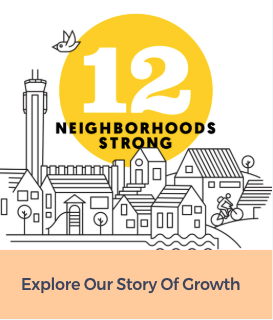In 1995 when the opening of Denver International Airport meant the closing of Stapleton International Airport, Denver had the unique opportunity to transform 7.5 square miles of runways, concourses and terminals into a beautiful new community. It would be the largest urban in-fill redevelopment in the country and, to this day, one of the largest in-fill projects ever.
The building of Central Park (formerly Stapleton) started as a collaborative effort by business leaders, civic officials and citizens who wanted to have a say in how Denver should grow. They spent countless hours and much of their own money creating what became known as the Green Book, the guiding principles for the redevelopment. In 1998, the city of Denver selected Forest City (now Brookfield Properties) to be the master developer and to make the vision of the Green Book a reality. In May 2001 the redevelopment began.
The idea was to take the best things about Denver’s classic neighborhoods – parks, welcoming front porches, alley-loaded garages, architectural diversity, tree-lined streets, more parks – and continue those urban patterns into new Denver neighborhoods. While applying some new thinking in the process. Like the use of water-wise landscaping and energy-efficient building standards on everything from homes to commercial spaces. Affordable housing, both for rent and sale, fitting seamlessly into the neighborhoods. And perhaps the most sustainable idea of them all: a pedestrian-friendly, mixed-use environment with everything you need a short walk or bike ride away.
Two decades later, Central Park stands as a model for urban redevelopment worldwide.
Buzzing with bike races, farmers markets and concerts in the park, Central Park now thrives at a grassroots level thanks to residents and business owners each adding their own touch. It has become a place that’s far better than anyone could have planned.



